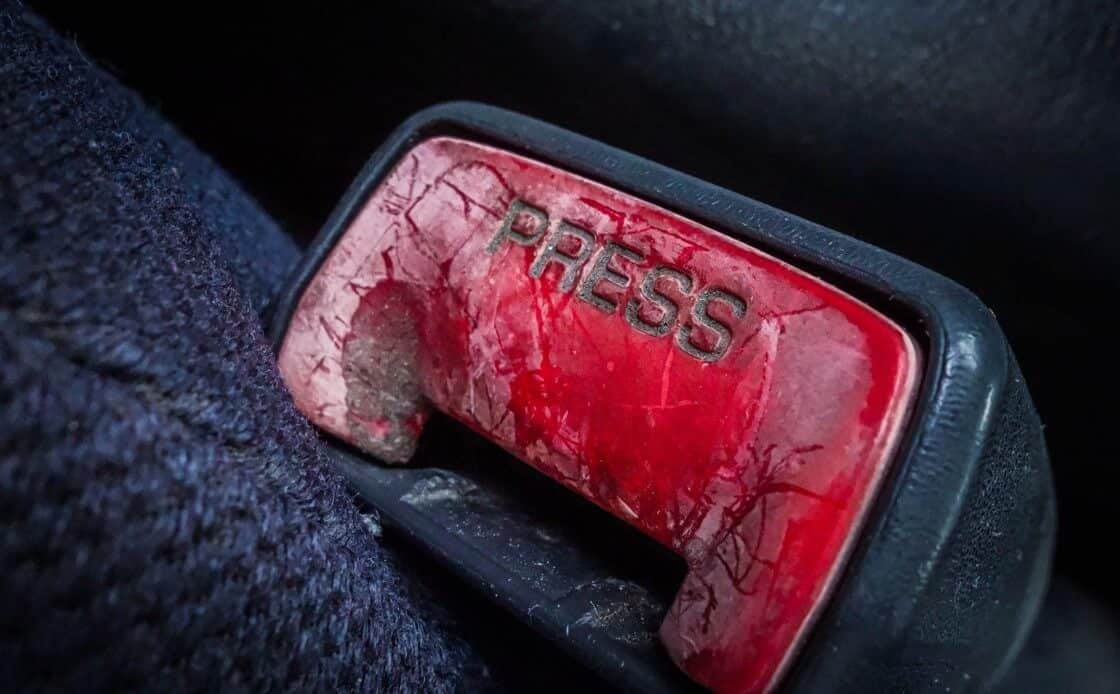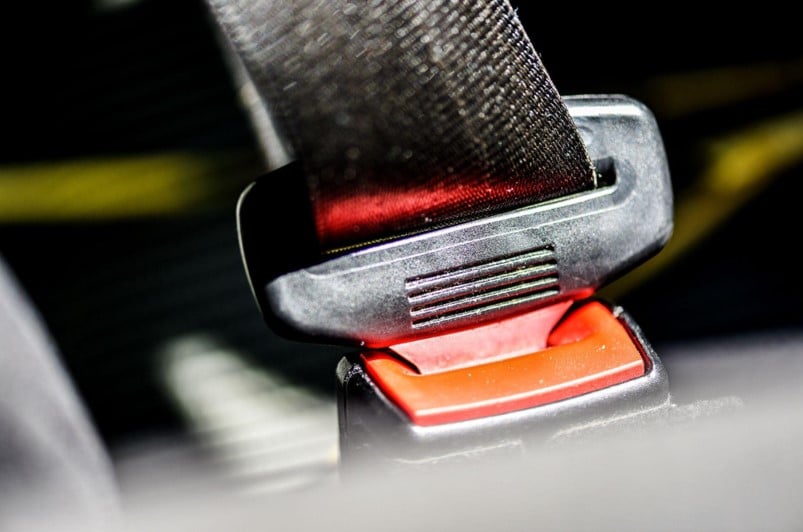Seat belts are essential for staying safe in your vehicle. And when they are one of the only things keeping your body and the dangers of the road separated, it can be a terrifying situation if you find that your seat belt buckle won’t latch properly.
There are a few common reasons seatbelt buckles malfunction, but luckily, all of them can be resolved with a few simple steps. This article examines the causes of seat belt malfunction and provides insight into how to fix a seat belt buckle that won’t latch.
Causes of Seat Belt Buckle Malfunction
Seat belt buckles are known to malfunction for a few common reasons. The most common reason seatbelt buckles malfunction is that the buckle or tongue is damaged or worn out.
Small cracks or chips on the seat belt tongue can prevent it from properly latching inside the buckle. Likewise, loose debris or broken parts inside the buckle may prevent it from grabbing the tongue.
The seat belt buckle can also malfunction if it is twisted or tangled. Many seat belt buckles won’t properly latch when the belt is twisted, and the tongue of the buckle is facing the wrong way. Resolving the issue is sometimes as simple as untwisting the belt, but some extreme cases may require more work to untangle the belt.
Corroded buckle components are another common cause of seatbelt buckle malfunction in your vehicle. This issue is particularly common in humid climates. You can inspect the tongue for rust easily, but you may need to view the inside of the buckle with a flashlight and magnifying glass. You can also consider removing and dismantling the buckle for a better view.
Troubleshooting Tips for Fixing a Seat Belt Buckle
Broken seat belt buckles only require a simple fix in most cases. To start troubleshooting what went wrong with your seat belt, inspect the tongue and the inside of the buckle for damage. If you notice any debris inside the buckle, you may need to dismantle it to remove the debris.
The issue is likely fixable if there aren’t any apparent signs of damage that would prevent the seat belt from buckling. In many cases, a twisted seat belt strap is the cause of latching issues.
You can address this by pulling the seat belt taut and twisting it just below the tongue of the buckle. Push the tongue over the twist until the belt flips over, then check to see if the latching issue is resolved.
Finally, check for any signs of corrosion. If you see rust on the buckle or tongue, you should use a rust-dissolving solution and follow the directions to attempt to remove the rust. You can also try DIY methods like soaking the metal in white vinegar. Cover the seat belt webbing or work very carefully to prevent staining.
DIY Seat Belt Buckle Repair Steps
In most cases, a broken seat belt buckle can be repaired when it is opened up and given a bit of attention. You should start unscrewing the buckle from the seat and taking it to your preferred workstation. Once you have the buckle, remove all of the screws from the buckle and then gently pry it apart with a screwdriver.
Test the internal motion by pushing down the release button. Inspect the buckle for debris or corrosion if certain parts aren’t moving correctly. Use a soft-bristled brush and gentle electronics cleaner to clean the internal components, then lubricate with WD-40.
Test the motion again. If the buckle continues to malfunction, consider replacing the buckle. You can order seatbelt buckle replacement parts online and complete a DIY repair. Otherwise, allow the buckle to dry before reassembling and reinstalling your good-as-new buckle.
When to Replace a Faulty Seat Belt Buckle
You need to replace your faulty seat belt buckle in a few cases. If you followed the repair steps above, but the buckle still won’t latch properly, you should replace the buckle. If your buckle doesn’t pass a car seat belt safety inspection, replace the buckle.
Likewise, if you find that the repair worked but it quickly starts malfunctioning again in just a few weeks, you should replace the buckle. The only exception is if you find a behavior causing repeated jams, such as if there are crumbs in the buckle every time you remove it.
Final Thoughts: Fixing a Seat Belt Buckle That Won’t Latch
It can be frustrating and scary when your vehicle seat belt won’t latch properly. While the issue requires immediate attention, it can usually be resolved at home in just a few steps. Even in the worst cases, you can trust the experts to help restore or replace your seat belt buckle.
Frequently Asked Questions
Can I Still Drive With a Malfunctioning Seat Belt Buckle?
You shouldn’t drive with a malfunctioning seat belt buckle. It’s easy to ignore the significant role that seat belts play in keeping passengers safe because dangerous situations very rarely take place, but they can happen at any time. Every drive you take with a malfunctioning seat belt buckle is one where your seat belt will not protect you in a potential accident.
How Often Should I Inspect My Seat Belt Buckle?
You should inspect your seat belt buckle once or twice a year. This will allow you to notice minor signs that indicate a need for replacement, such as wear and tear on the belt webbing. In most cases, you will be able to see issues like the inability to latch as soon as they occur. But if you maintain your seat belt buckle and keep it clean, you may never encounter these issues.
Can I Replace the Buckle Myself, or Should I Go to a Mechanic?
You can replace your seat belt buckle by yourself. You should purchase the seat belt buckle from a reputable seller to be sure it is built strongly enough to protect you in an accident. If you’re not confident about properly installing the seat belt, however, there’s nothing wrong with working with an experienced mechanic.
What Should I Do if My Seat Belt Buckle Won’t Release?
If your seat belt buckle won’t release, spray lubricant into the opening of the buckle and allow it to sit for several minutes. Avoid forcefully pulling on the belt because you may break the internal components of the buckle. Gently attempt to release the buckle. In most cases, it will release, and you can inspect the inside of the buckle for the debris that caused it to get stuck.



